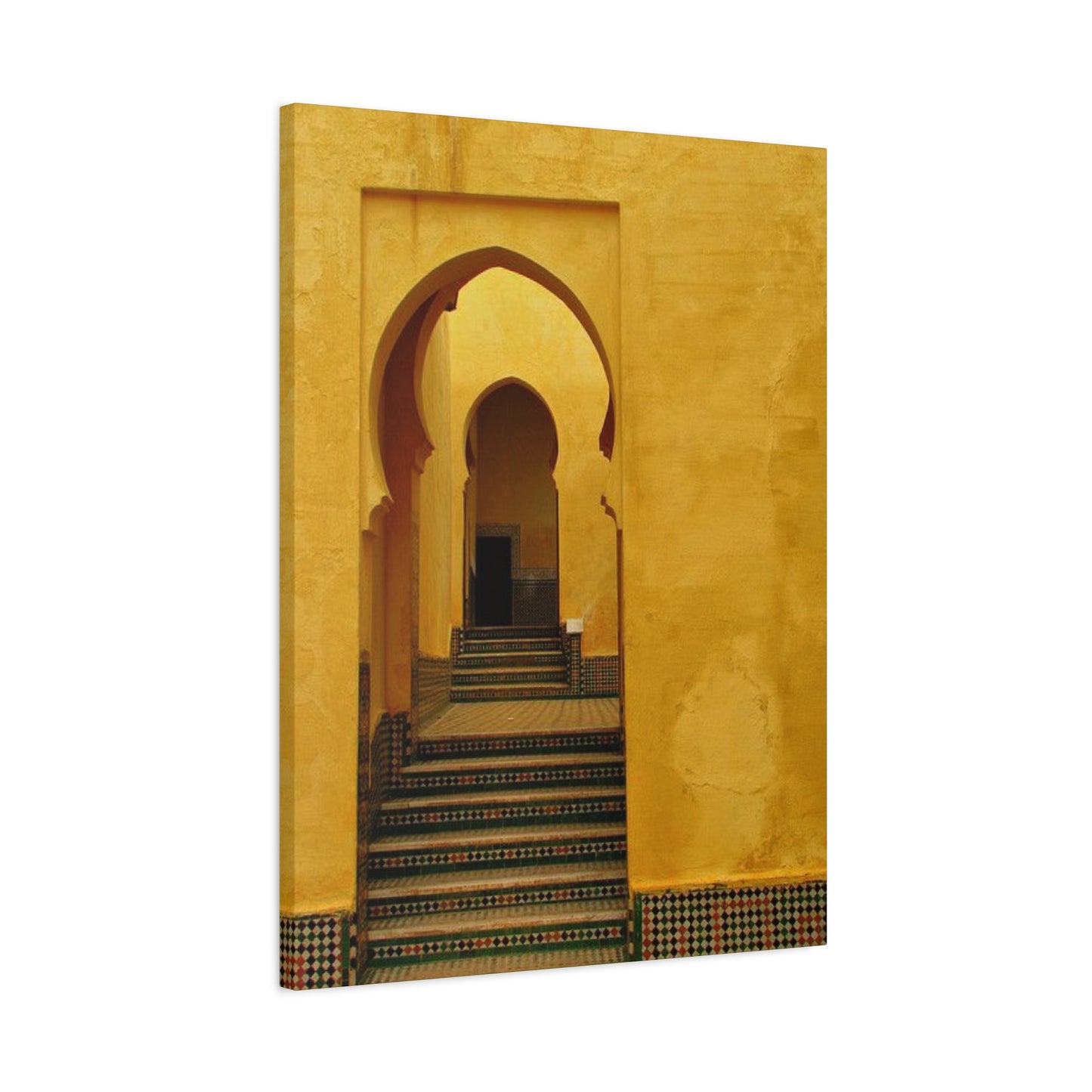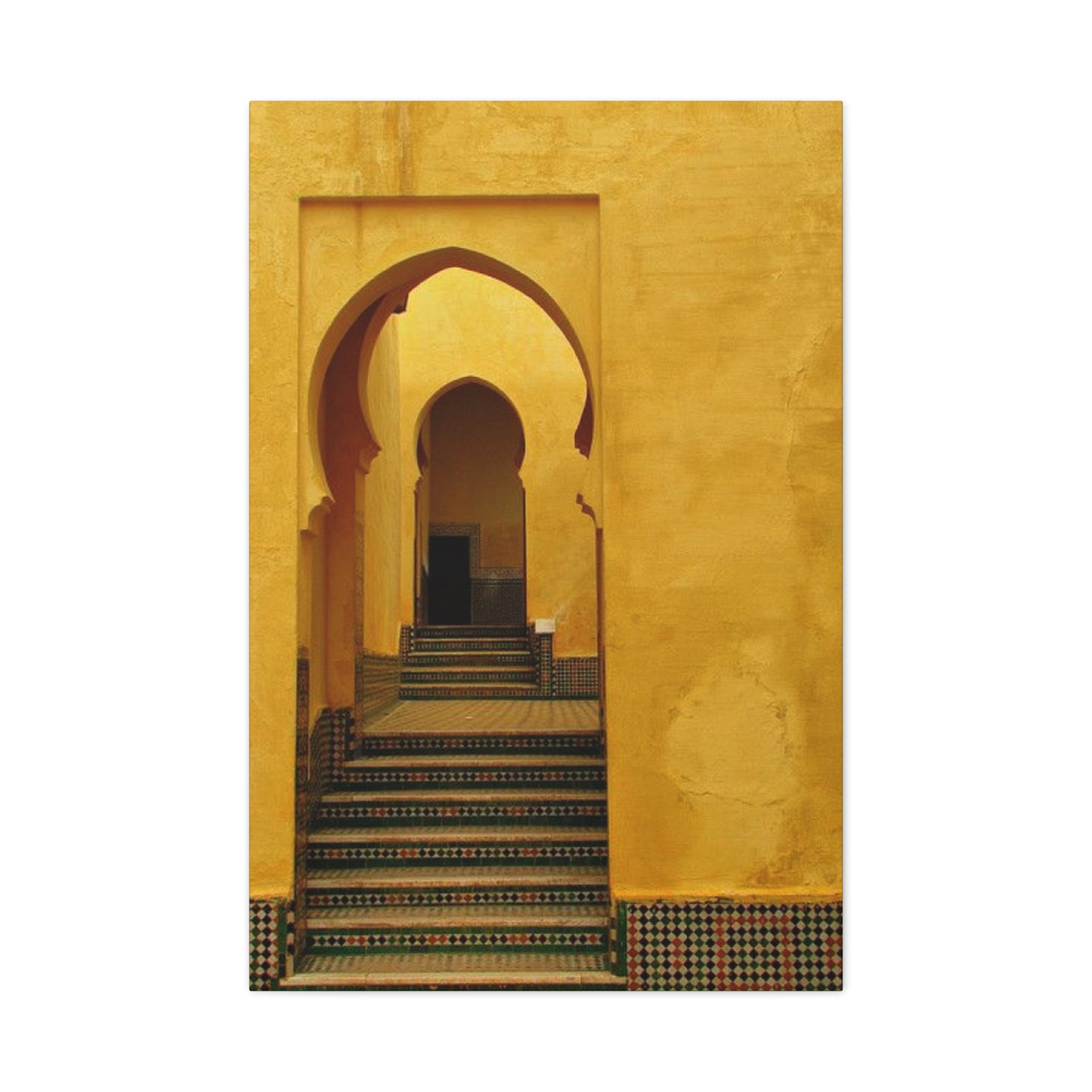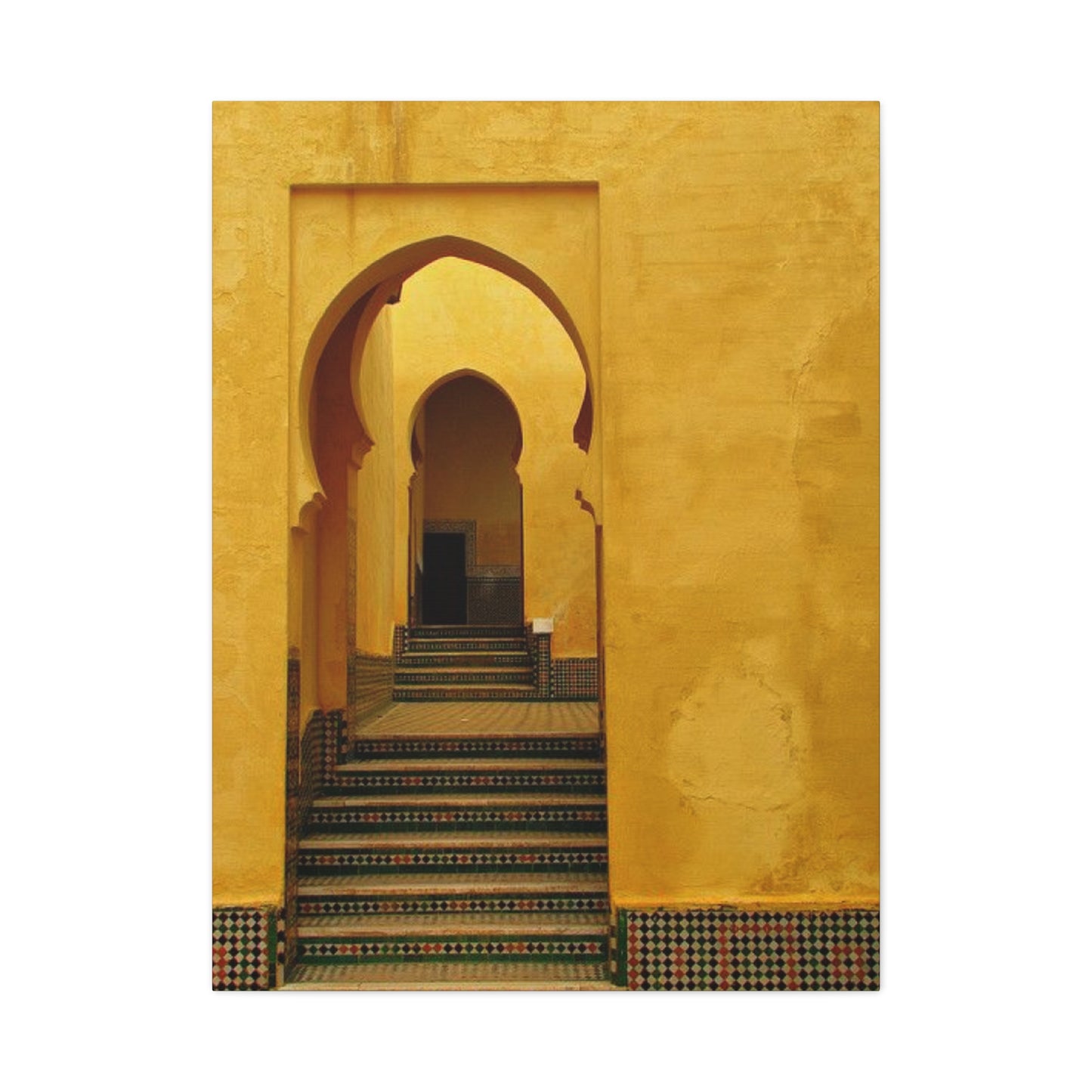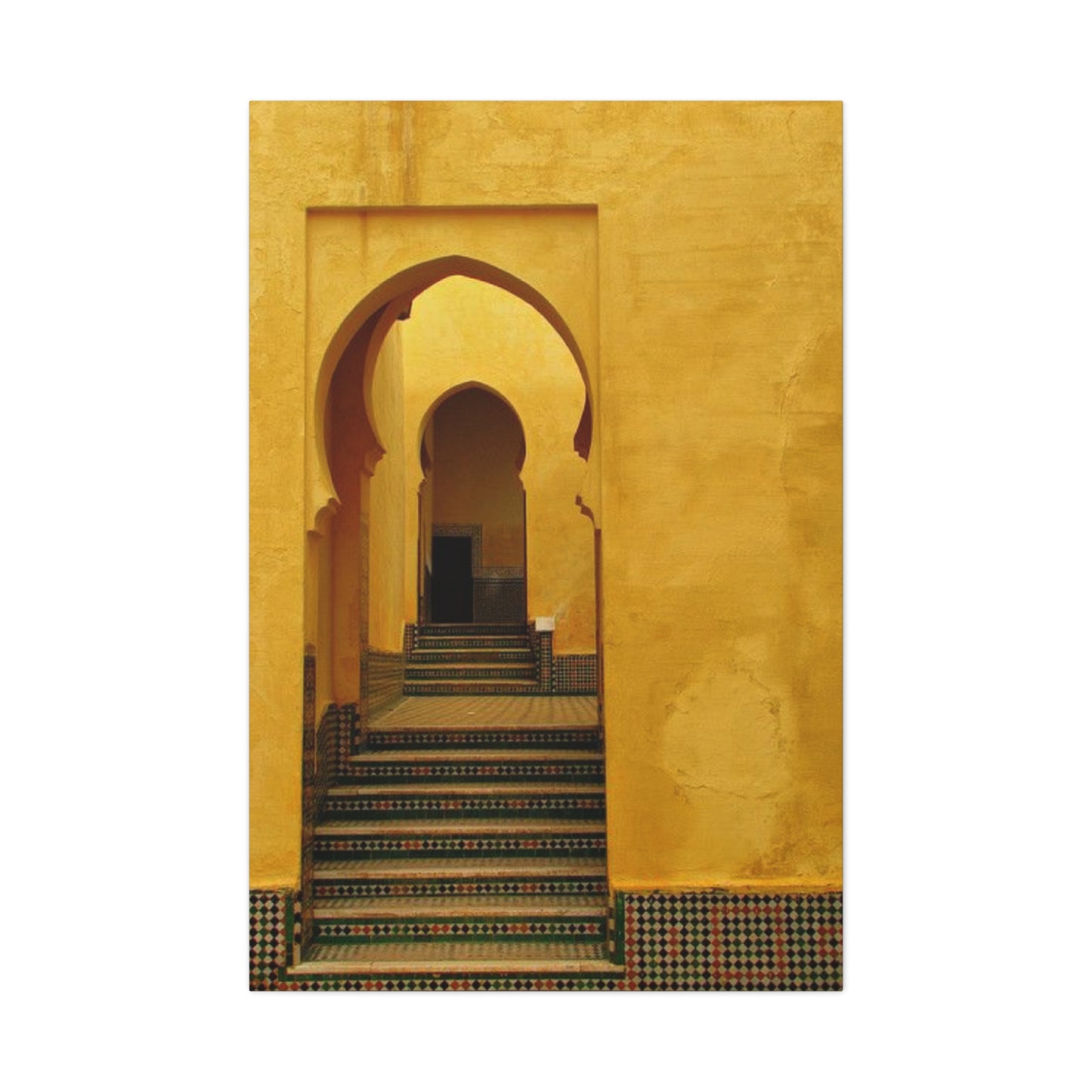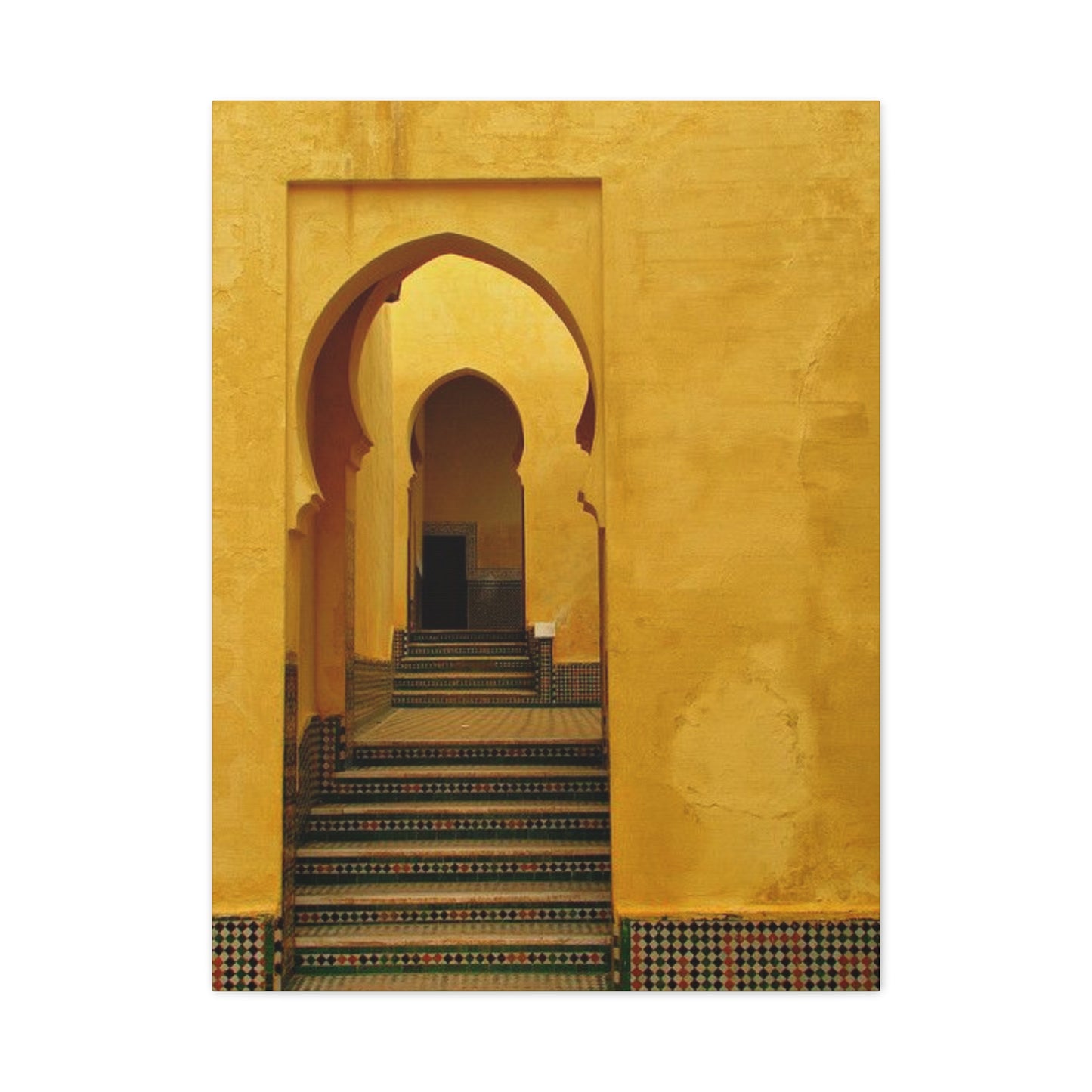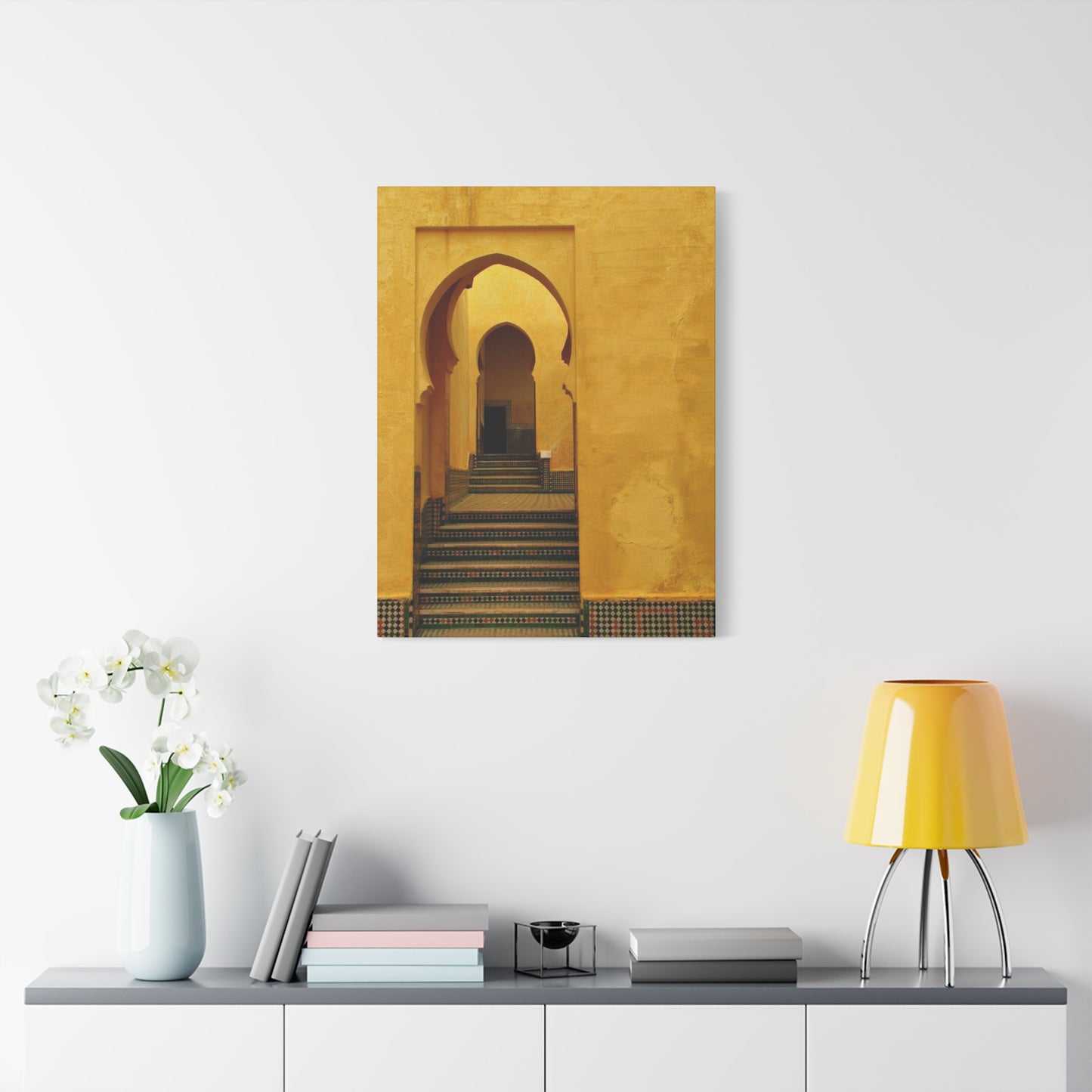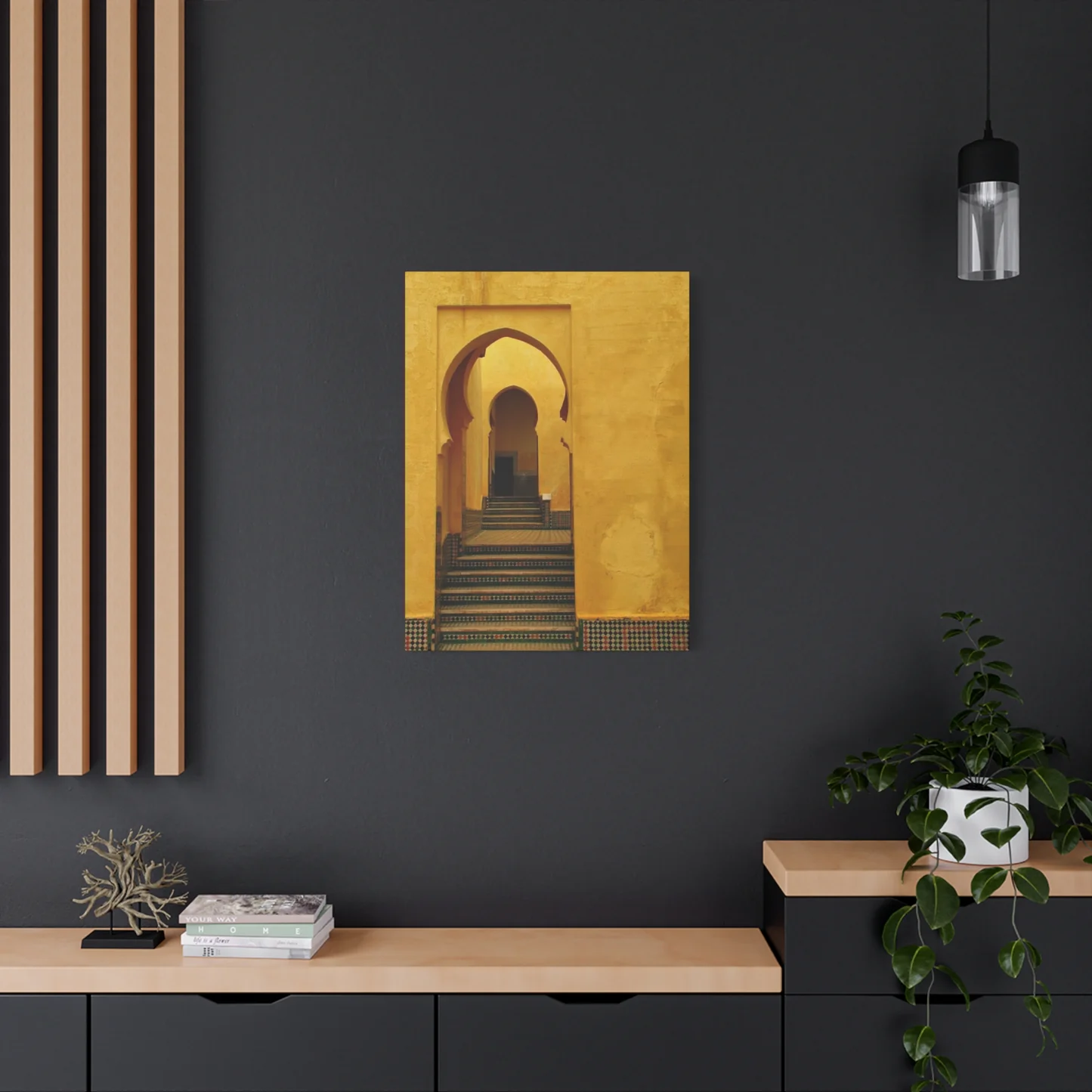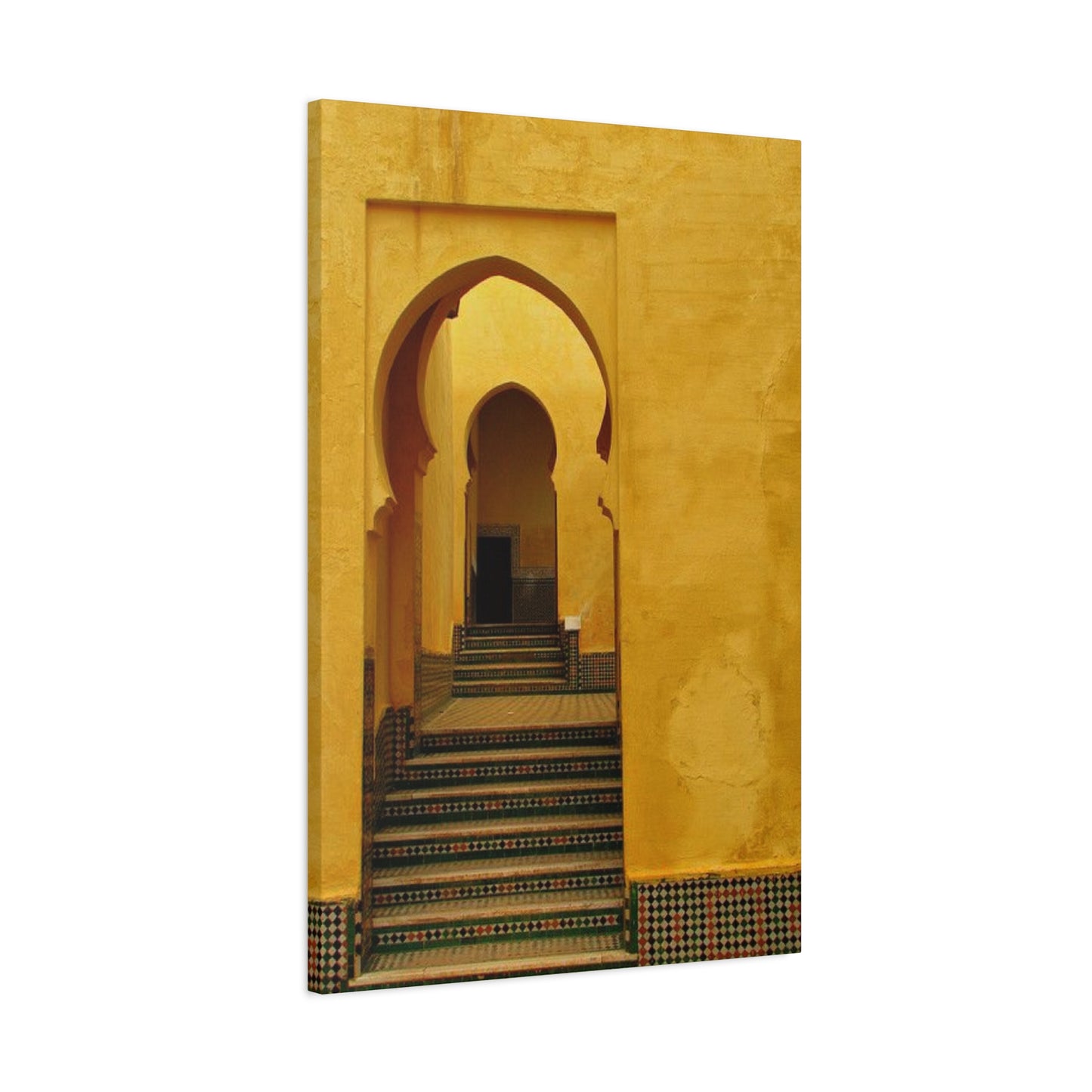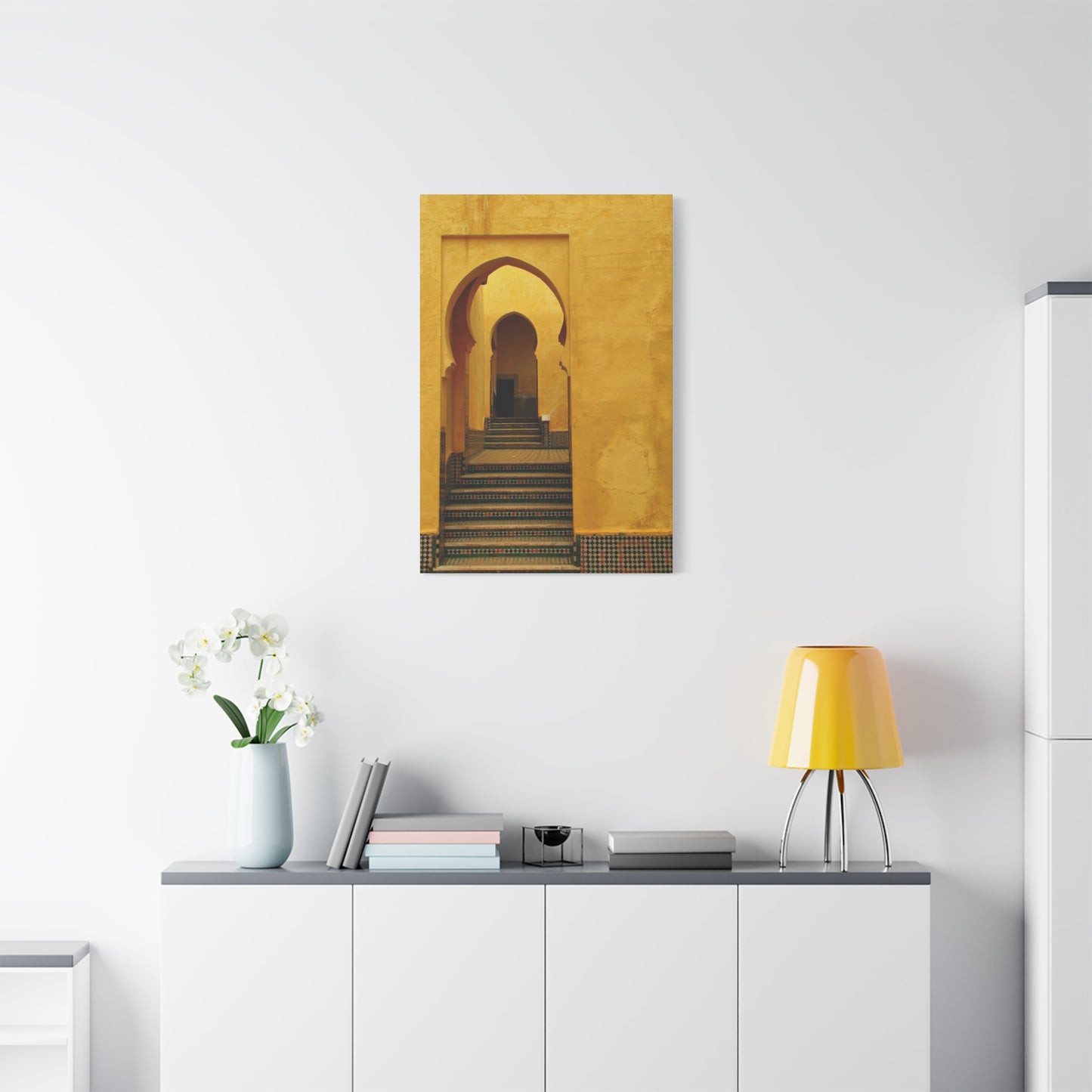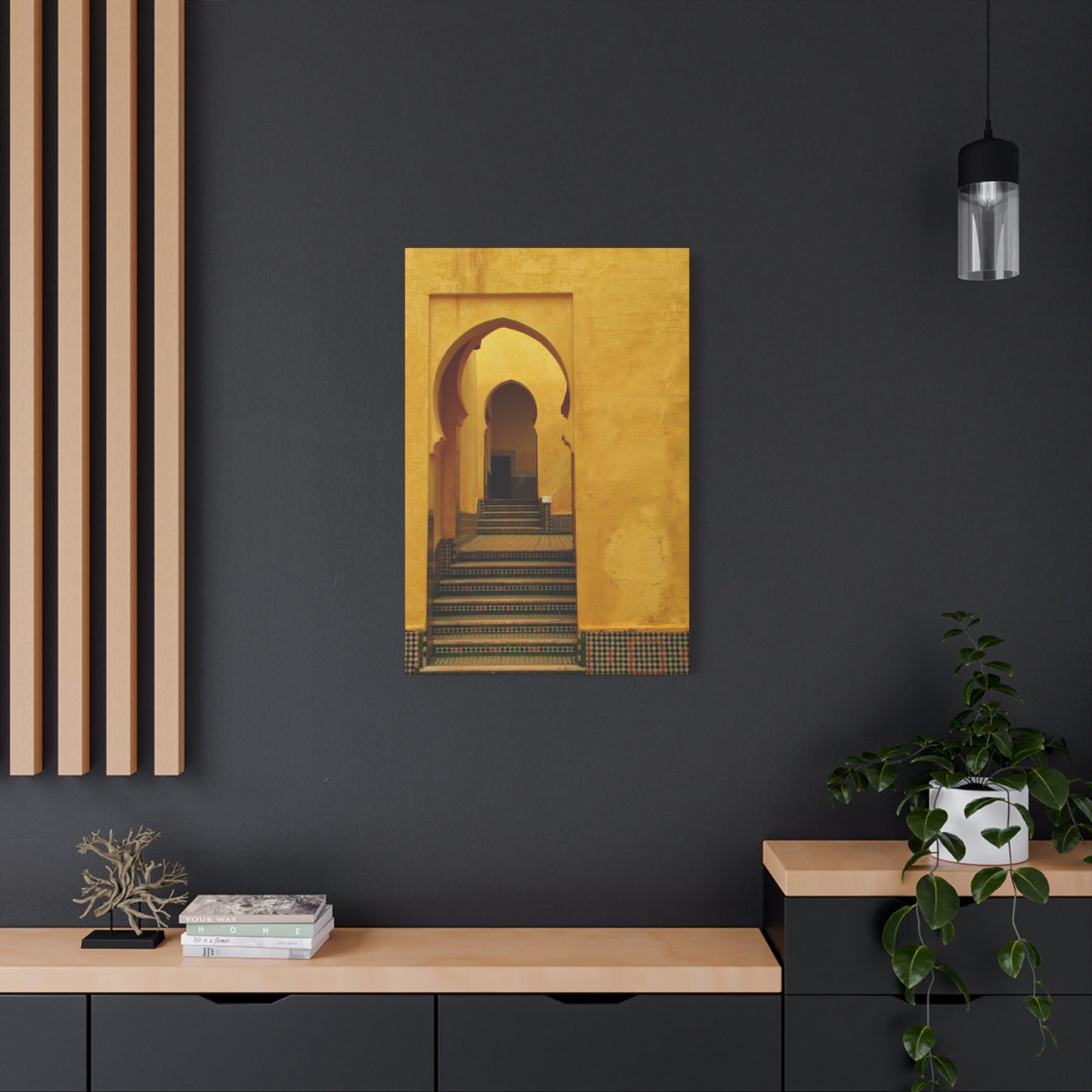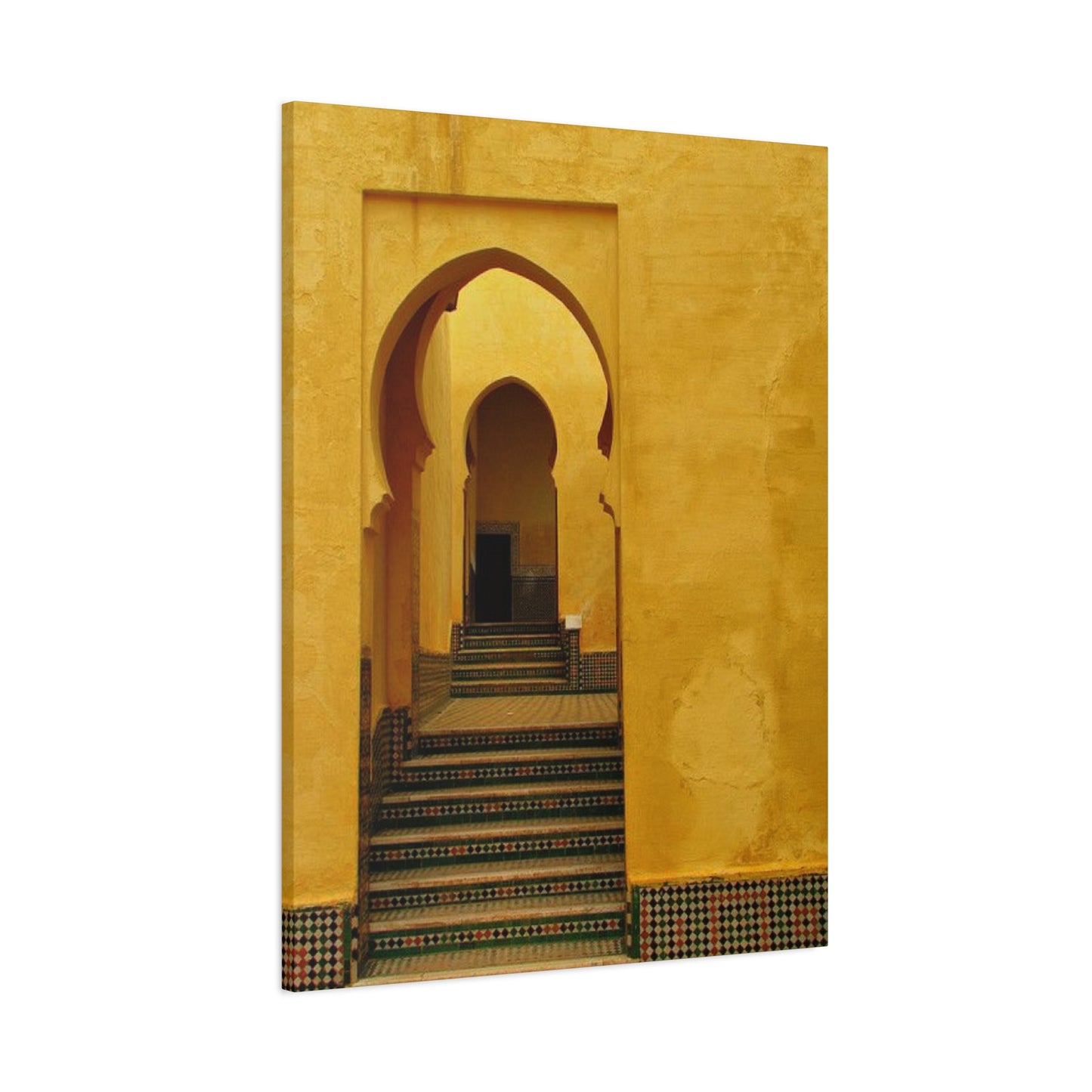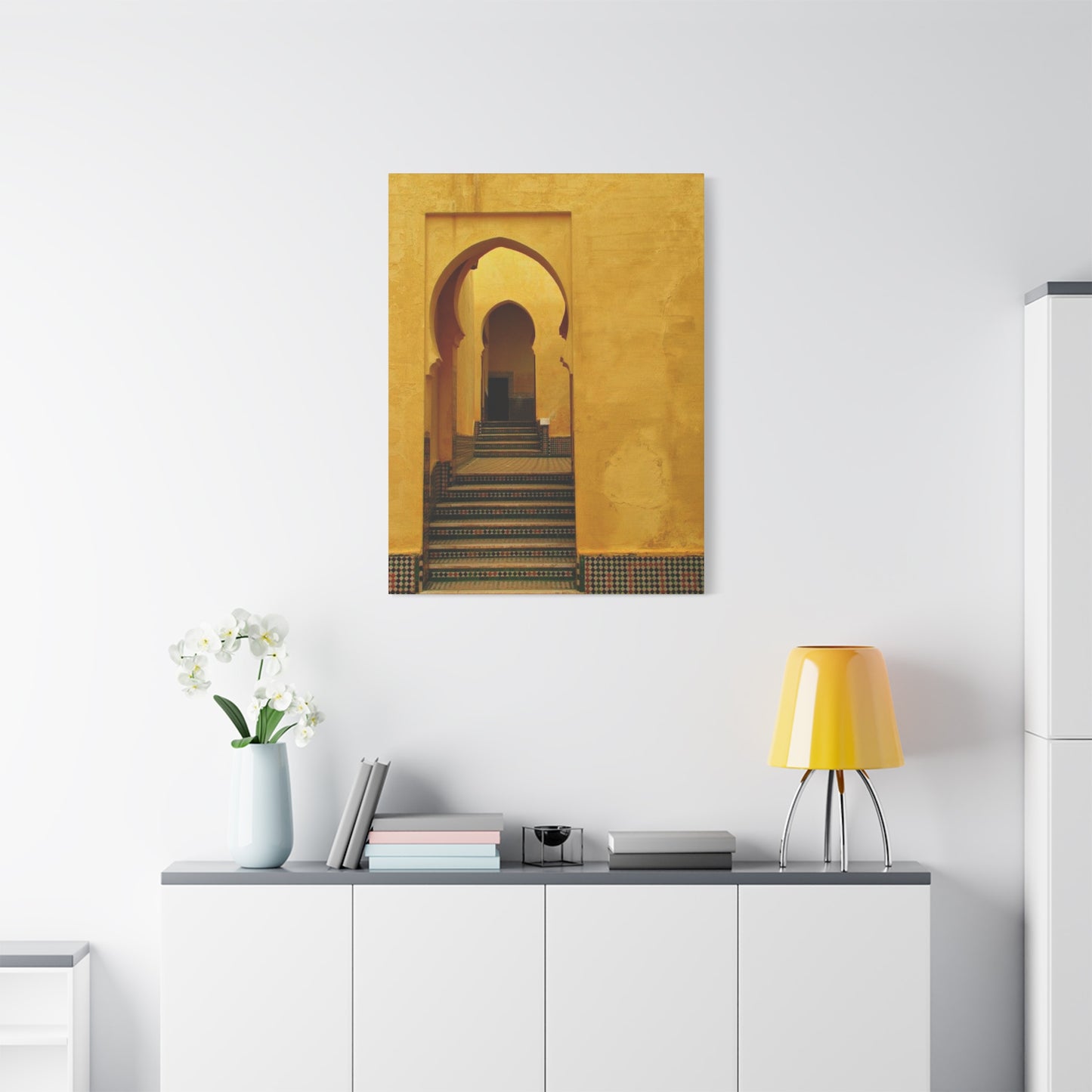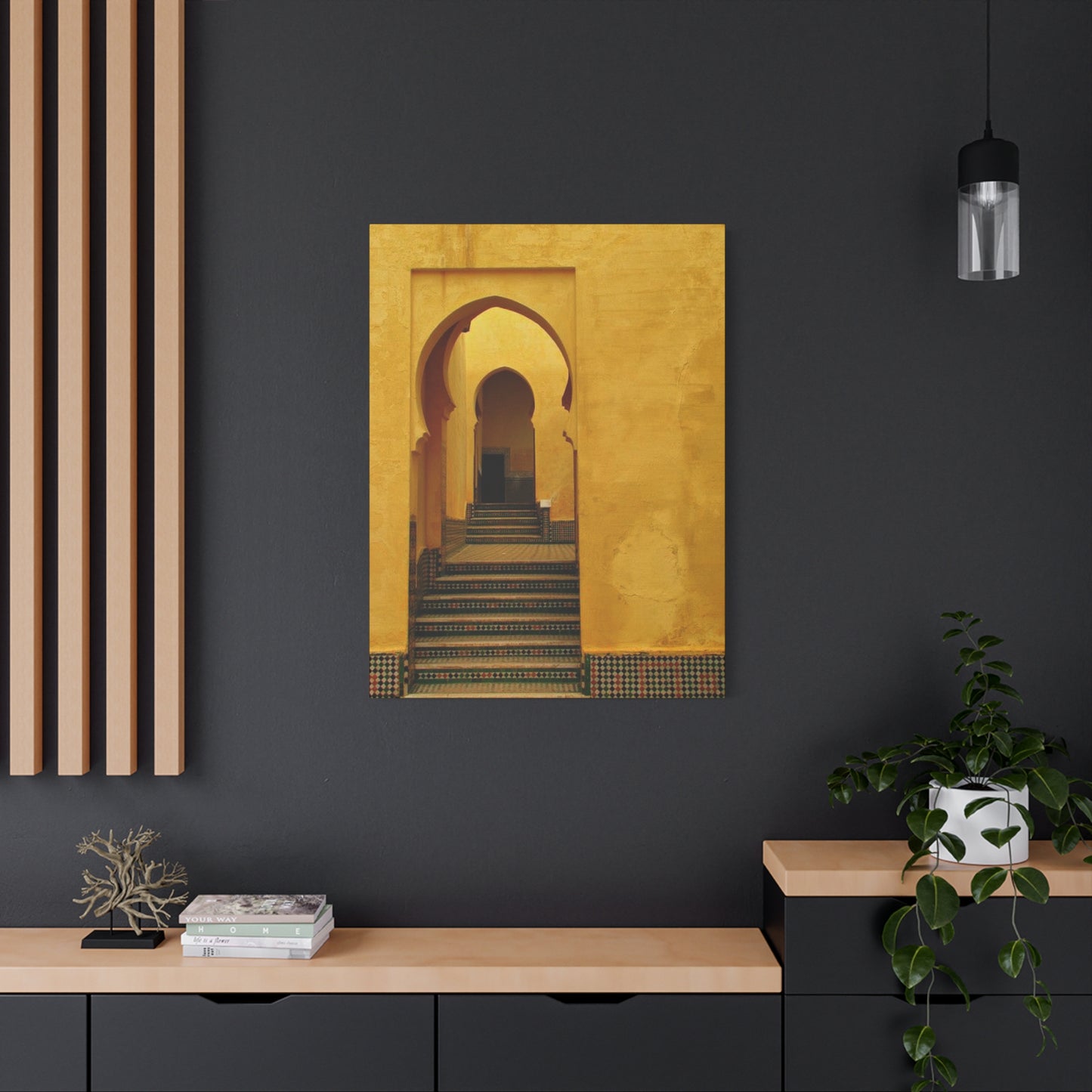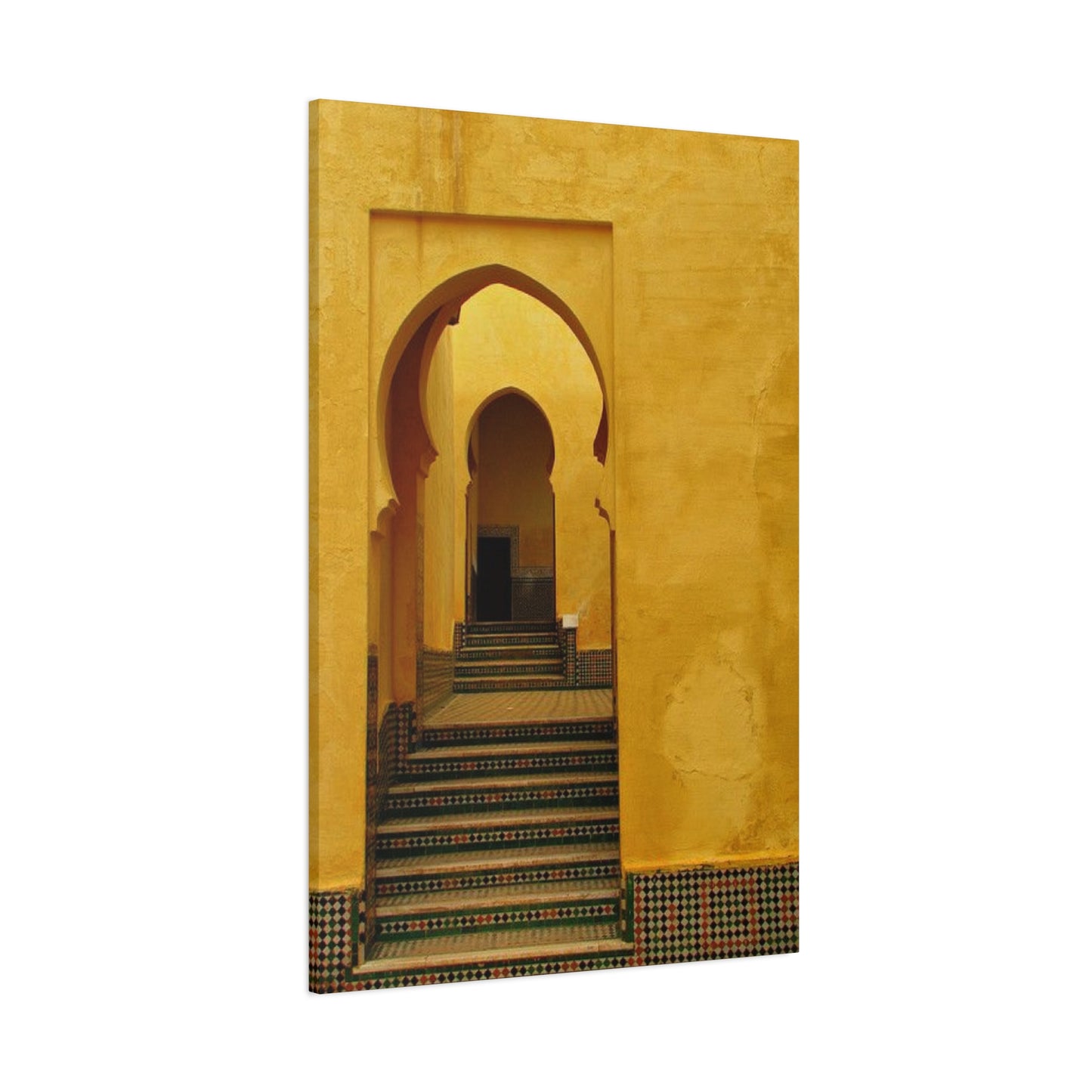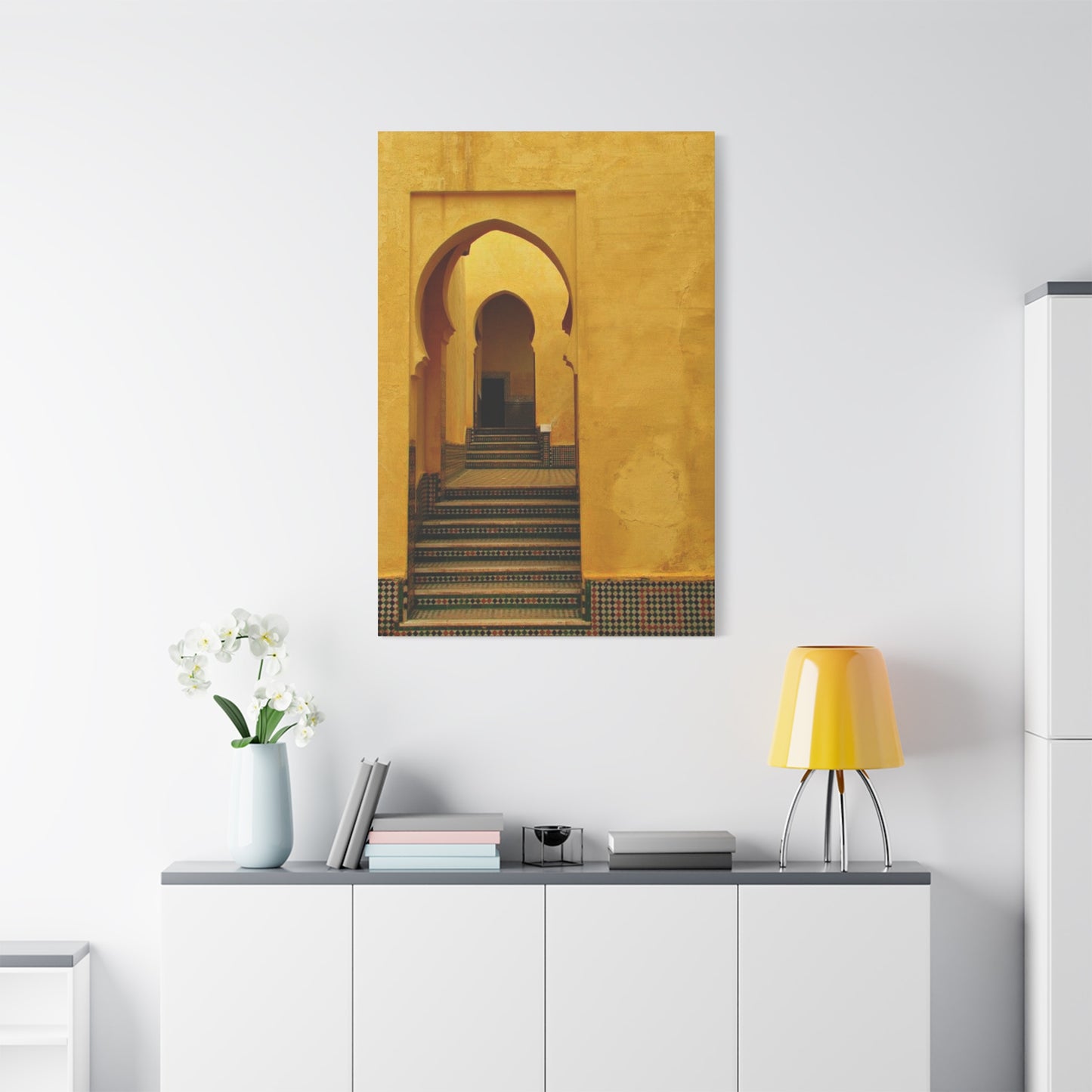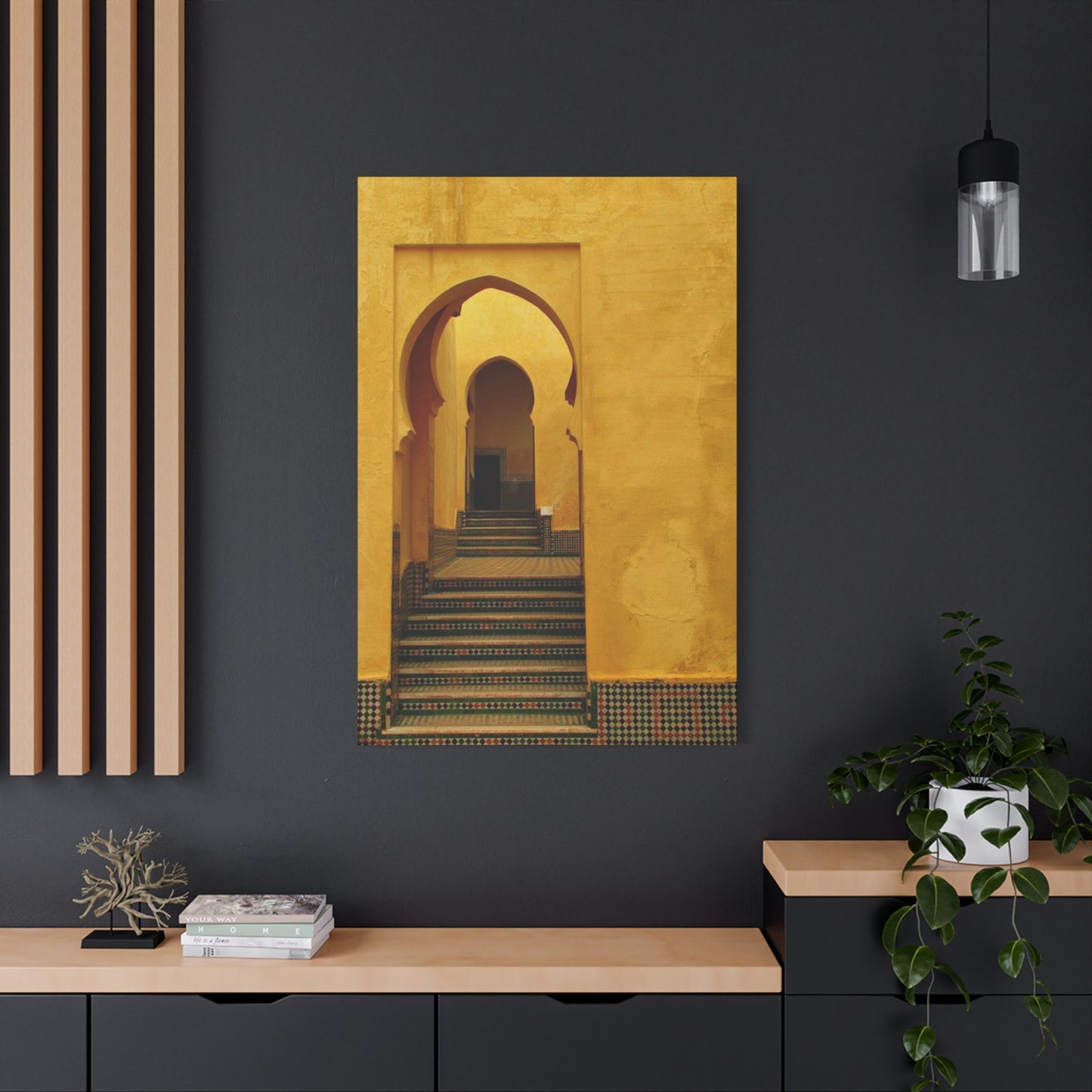Moroccan Door Passage Wall Art: Bringing Ancient Architectural Beauty to Your Living Environment
The mesmerizing beauty of Moroccan door passage wall art has captivated homeowners and art enthusiasts worldwide, transforming ordinary rooms into extraordinary havens of cultural richness and visual splendor. These stunning artistic representations capture the essence of centuries-old architectural traditions, bringing the mystique and elegance of North African craftsmanship directly into contemporary living environments.
Moroccan door passage wall art represents far more than mere decorative elements; they serve as windows into a rich cultural heritage that spans over a millennium. Each piece tells a story of skilled artisans who dedicated their lives to perfecting intricate geometric patterns, vibrant color combinations, and symbolic motifs that have been passed down through generations. The artistry found in these door passages reflects the sophisticated aesthetic sensibilities of Moroccan culture, where beauty and functionality seamlessly merge to create architectural masterpieces.
The appeal of these artistic representations lies in their ability to transport viewers to the bustling medinas of Marrakech, the coastal cities of Casablanca, or the mountain villages of the Atlas range. Every curve, every color, and every geometric element has been carefully crafted to evoke the sensory experience of walking through ancient Moroccan cities, where ornate doorways served as both functional entrances and artistic expressions of the inhabitants' status and taste.
Modern homeowners increasingly seek authentic cultural elements that can add depth and character to their living environments. Moroccan door passage wall art fulfills this desire by offering a perfect blend of historical significance and contemporary appeal. These pieces work exceptionally well in various settings, from minimalist modern apartments to traditional family homes, proving their versatility and timeless appeal.
The intricate details found in authentic Moroccan door passage designs showcase the mathematical precision and artistic vision of their creators. Geometric patterns follow complex mathematical principles, creating visual rhythms that are both soothing and stimulating. The interplay of shapes, lines, and colors creates a hypnotic effect that draws viewers in and invites them to explore the deeper meanings embedded within each design.
Cultural authenticity plays a crucial role in the growing popularity of Moroccan door passage wall art. In an increasingly globalized world, people seek connections to diverse cultures and traditions. These artistic pieces provide a tangible link to Moroccan heritage, allowing individuals to appreciate and honor a culture that has contributed significantly to world art and architecture.
The psychological impact of incorporating such culturally rich art into living environments cannot be understated. Studies have shown that exposure to geometric patterns and warm, earthy colors can reduce stress levels and promote feelings of calm and well-being. The meditative quality of Moroccan geometric designs makes them particularly suitable for creating peaceful, harmonious atmospheres in homes and workplaces.
Selecting Authentic Moroccan Door Passage Prints
Choosing the right Moroccan door passage prints requires careful consideration of various factors that contribute to both aesthetic appeal and cultural authenticity. The process begins with understanding the different regional styles and their distinctive characteristics, as Morocco's diverse geographical regions have developed unique artistic traditions that are reflected in their architectural elements.
When evaluating potential prints, examine the quality of geometric patterns and their mathematical precision. Authentic Moroccan designs follow strict geometric principles that have been refined over centuries. Look for patterns that demonstrate perfect symmetry and proportion, as these elements are hallmarks of traditional Moroccan craftsmanship. The complexity of the geometric arrangements should feel intentional and purposeful rather than arbitrary or haphazard.
Color authenticity represents another critical consideration in selection. Traditional Moroccan door passages typically feature earth-tones inspired by the natural landscape, including warm terracotta, deep ochres, rich blues reminiscent of the Atlantic Ocean, and vibrant greens that echo the palm groves and gardens found throughout the country. These colors should appear naturally weathered and aged rather than artificially bright or synthetic.
Print quality significantly affects the overall impact and longevity of your chosen artwork. High-resolution images capture the intricate details and subtle color variations that make authentic Moroccan designs so captivating. Look for prints that maintain clarity even when viewed up close, allowing observers to appreciate the fine craftsmanship and attention to detail that characterizes genuine Moroccan artistry.
Size considerations play a crucial role in achieving the desired visual impact. Larger prints can serve as commanding focal points that immediately draw attention and establish the room's aesthetic direction. Smaller prints work well when grouped together to create gallery walls or when used to complement existing artwork and decorative elements.
The historical period from which a design originates can significantly influence its aesthetic character. Earlier periods often feature more geometric abstraction and symbolic elements, while later periods may incorporate more naturalistic motifs and refined decorative techniques. Understanding these historical distinctions helps in selecting pieces that align with your aesthetic preferences and cultural interests.
Regional variations within Morocco add another layer of complexity to the selection process. Designs from Fez often feature more intricate geometric patterns and sophisticated color palettes, reflecting the city's status as a center of learning and culture. Marrakech designs tend to be bolder and more vibrant, reflecting the city's role as a commercial and cultural crossroads. Coastal regions may incorporate maritime influences, while mountain regions often feature earthier tones and more naturalistic elements.
Authenticity verification requires careful research and, when possible, consultation with experts in Moroccan art and culture. Reputable sellers should be able to provide information about the origins of their designs, including the specific region, historical period, and cultural context. This information not only ensures authenticity but also enriches your understanding and appreciation of the artwork.
The symbolic meaning embedded within different motifs adds depth to the selection process. Traditional Moroccan designs often incorporate symbols representing protection, prosperity, fertility, and spiritual enlightenment. Understanding these meanings can help you choose pieces that resonate with your personal values and aspirations.
Consider the overall mood and atmosphere you wish to create in your living environment. Some Moroccan door passage designs project energy and vibrancy, while others convey serenity and contemplation. Matching the emotional character of the artwork to your intended atmosphere ensures a harmonious and satisfying result.
Color Palettes in Moroccan Door Passage Wall Art
The color schemes employed in Moroccan door passage wall art reflect the natural beauty and cultural richness of North Africa, creating visual experiences that are both authentic and emotionally resonant. These carefully chosen palettes draw inspiration from Morocco's diverse landscapes, from the golden sands of the Sahara Desert to the deep blue waters of the Mediterranean and Atlantic coasts.
Traditional Moroccan color palettes center around earth tones that mirror the natural environment. Warm terracotta shades evoke the clay buildings that characterize many Moroccan cities, while deep ochre and sienna tones reflect the rich soils and rock formations found throughout the country. These foundational colors provide a sense of groundedness and stability that forms the backbone of authentic Moroccan design.
Blue holds special significance in Moroccan culture and frequently appears in door passage designs. The various shades of blue, from deep cobalt to lighter cerulean, represent different aspects of Moroccan life and spirituality. Deep blues often symbolize protection and ward off evil influences, while lighter blues evoke the clarity of desert skies and the refreshing qualities of water in an arid climate.
Green appears regularly in Moroccan door passage art, representing fertility, prosperity, and the sacred nature of plant life in a desert environment. The range of greens used spans from deep forest tones to lighter, more vibrant shades that echo the palm fronds and garden vegetation that provide respite in Moroccan cities and oases.
Red and orange tones bring warmth and energy to Moroccan designs, reflecting the intense sunlight and the passionate spirit of Moroccan culture. These colors range from deep burgundy and wine shades to bright orange and coral tones that capture the vibrancy of Moroccan markets and celebrations.
The sophisticated use of color combinations in authentic Moroccan designs demonstrates a deep understanding of color theory and psychological impact. Complementary colors are often paired to create visual tension and excitement, while analogous color schemes provide harmony and flow. The master craftsmen who created these designs understood how different colors interact to create specific emotional and spiritual effects.
Metallic accents, particularly gold and copper tones, add richness and luxury to many Moroccan door passage designs. These metallic elements often appear as highlights or decorative details that catch and reflect light, creating dynamic visual effects that change throughout the day as lighting conditions shift.
The aging and weathering process contributes significantly to the authentic appearance of traditional Moroccan colors. Over time, exposure to desert sun, wind, and sand creates a patina that softens and mellows the original colors, resulting in the subtle, muted tones that characterize aged Moroccan architecture. Modern reproductions often attempt to recreate this weathered appearance through various artistic techniques.
Color symbolism plays an important role in traditional Moroccan culture, and understanding these meanings can enhance appreciation of door passage wall art. Different colors carry specific cultural and religious significance, with certain combinations believed to bring good fortune, protection, or spiritual enlightenment to inhabitants.
The psychological impact of Moroccan color palettes has been studied extensively, with research showing that these warm, earthy combinations tend to promote feelings of comfort, security, and well-being. The natural harmony of these color schemes creates environments that feel both exotic and familiar, making them particularly suitable for residential applications.
Regional variations in color preferences reflect local materials, cultural influences, and climatic conditions. Coastal cities often incorporate more blues and greens, reflecting their maritime connections, while inland desert regions favor warmer, earthier tones that echo the surrounding landscape.
The seasonal aspect of Moroccan colors adds another dimension to their appeal. The warm tones provide visual warmth during cooler months, while the cooler blues and greens offer psychological relief during hot summer periods. This natural adaptation makes Moroccan color palettes particularly suitable for year-round enjoyment.
Modern interpretations of traditional Moroccan color schemes often incorporate contemporary color theory while maintaining authentic character. These updated versions may feature slightly different saturation levels or include subtle modern accents while preserving the essential character and emotional impact of traditional palettes.
Geometric Patterns in Door Passage Designs
The geometric patterns found in Moroccan door passage designs represent one of the most sophisticated and mathematically precise art forms in world culture. These intricate arrangements demonstrate the profound understanding of mathematical principles possessed by Moroccan artisans, who created complex visual compositions that satisfy both aesthetic and spiritual purposes.
Islamic geometric principles form the foundation of these patterns, reflecting the cultural and religious context in which they were created. The emphasis on geometric rather than figurative representation stems from religious traditions that discourage the depiction of living beings, leading artists to develop increasingly sophisticated abstract designs that express beauty and meaning through pure form and proportion.
The mathematical basis of these geometric patterns involves complex calculations and precise measurements that ensure perfect symmetry and proportion. Master craftsmen developed sophisticated techniques for creating patterns that could be extended infinitely in all directions while maintaining their visual integrity and balance. This mathematical precision creates a sense of order and harmony that appeals to viewers on both conscious and subconscious levels.
Star and polygon motifs appear frequently in Moroccan geometric designs, with eight-pointed stars being particularly common and significant. These star patterns often serve as central focal points around which other geometric elements are arranged, creating hierarchical compositions that guide the viewer's eye through the design in specific patterns.
Interlacing patterns create complex weaves of geometric elements that appear to pass over and under each other in three-dimensional arrangements. These interlacing designs require exceptional skill to execute properly, as the artist must maintain consistent spacing and proportions throughout the pattern while creating the illusion of depth and movement.
The concept of infinite repetition is central to Islamic geometric art, reflecting spiritual beliefs about the infinite nature of divine creation. Patterns are designed to extend seamlessly in all directions, creating the impression that they continue beyond the visible boundaries of the artwork. This characteristic makes Moroccan geometric patterns particularly suitable for architectural applications where they must integrate with surrounding structural elements.
Tessellation techniques allow geometric shapes to fit together perfectly without gaps or overlaps, creating unified compositions that demonstrate the mathematical relationships between different geometric forms. These tessellations often incorporate multiple types of polygons arranged in complex but logical sequences that follow strict mathematical rules.
The use of negative and positive areas in geometric patterns creates visual rhythms and breathing areas that prevent the designs from becoming overwhelming or chaotic. Skilled artisans understand how to balance complex geometric arrangements with simpler areas that allow the eye to rest and appreciate the overall composition.
Color application in geometric patterns follows specific rules that enhance the mathematical structure of the design. Different colors are used to distinguish between overlapping elements, highlight specific geometric relationships, and create visual depth and dimension. The color choices often follow the same mathematical principles as the geometric arrangements themselves.
Scale variations within geometric patterns add visual interest and complexity while maintaining overall unity. Large geometric elements may contain smaller versions of the same or related patterns, creating fractal-like compositions that reward close examination and reveal new details at different viewing distances.
The symbolic meaning of specific geometric shapes adds layers of cultural and spiritual significance to these patterns. Circles represent perfection and unity, squares symbolize the material world, and triangles often represent the connection between earth and heaven. Understanding these symbolic meanings enriches appreciation of the artwork's cultural context.
Historical development of Moroccan geometric patterns can be traced through different periods and regions, with each era contributing innovations and refinements to the overall tradition. Early patterns tend to be simpler and more linear, while later developments incorporate increased complexity and sophisticated three-dimensional effects.
The influence of Moroccan geometric patterns extends far beyond their original architectural context, inspiring artists, designers, and mathematicians around the world. Modern applications include contemporary art, graphic design, textile patterns, and architectural elements that adapt traditional principles to current needs and aesthetic preferences.
Framing Options for Moroccan Door Passage Art
The selection of appropriate framing for Moroccan door passage wall art plays a crucial role in presenting these cultural treasures in their best possible light while ensuring their preservation and integration with contemporary living environments. The right frame can enhance the inherent beauty of the artwork while providing necessary protection and structural support.
Traditional framing approaches often emphasize simplicity and elegance to avoid competing with the complex patterns and rich colors of the artwork itself. Natural wood frames in warm tones such as walnut, cedar, or oak complement the earthy color palettes typically found in Moroccan designs while providing a classic, timeless appearance that works well in various settings.
Metal framing options offer a more contemporary approach that can create interesting contrasts with traditional Moroccan motifs. Bronze, copper, and brass frames echo the metallic accents often found in authentic Moroccan designs, creating harmonious connections between the frame and the artwork. Black or dark metal frames provide strong contrast that can make vibrant Moroccan colors appear even more striking.
The choice between matted and unmatted presentations significantly affects the overall appearance and impact of the artwork. Matting provides breathing room around the image and can help integrate the artwork with the surrounding wall color and room decor. Neutral mats in cream, beige, or soft gray work particularly well with Moroccan art, while colored mats should be chosen carefully to complement rather than compete with the artwork's existing colors.
Custom framing solutions allow for personalized approaches that take into account the specific characteristics of each piece of artwork and its intended environment. Professional framers can recommend acid-free materials, UV-protective glazing, and conservation techniques that ensure the longevity of valuable prints while maintaining their visual impact.
Float mounting techniques create the impression that the artwork is floating within the frame, adding depth and sophistication to the presentation. This approach works particularly well with Moroccan prints that have interesting textures or irregular edges that contribute to their authentic character.
Multiple matting layers can create rich, complex borders that complement the intricate nature of Moroccan geometric patterns. Double or triple matting using different colors and textures adds visual interest while maintaining appropriate proportions and balance.
Gallery-style framing emphasizes simplicity and allows the artwork to speak for itself without distraction. Clean lines, minimal ornamentation, and high-quality materials characterize this approach, which works particularly well in contemporary settings where the contrast between traditional art and modern presentation creates dynamic visual tension.
The size of the frame relative to the artwork affects both the visual impact and the practical considerations of hanging and placement. Oversized frames can create dramatic effects but require adequate wall area and strong mounting systems, while smaller frames allow for more flexible placement options.
Corner treatments and joinery techniques affect both the appearance and durability of the frame. Traditional mortise and tenon joints provide superior strength and longevity, while modern techniques may offer different aesthetic characteristics and cost advantages.
Glazing options include regular glass, non-reflective glass, and UV-protective varieties that help prevent fading and deterioration of the artwork. The choice depends on the lighting conditions in the intended location, the value and vulnerability of the artwork, and aesthetic preferences regarding reflection and clarity.
Conservation framing techniques are essential for valuable or irreplaceable pieces, incorporating acid-free materials, proper spacing between the artwork and glazing, and reversible mounting techniques that allow for future conservation work if necessary.
Lighting considerations should influence framing decisions, as different frame styles and glazing options interact differently with various lighting conditions. The frame should enhance rather than interfere with both natural and artificial lighting effects.
Budget considerations affect framing choices, but it's important to balance cost savings with appropriate protection and presentation quality. Investment in quality framing can significantly enhance the perceived value and longevity of Moroccan door passage wall art.
Cultural Heritage of Moroccan Door Passages
The cultural heritage embodied in Moroccan door passages represents centuries of artistic evolution, social tradition, and architectural innovation that continues to influence contemporary design and cultural appreciation worldwide. These remarkable architectural elements serve as tangible connections to a rich historical legacy that encompasses diverse cultural influences and sophisticated artistic achievements.
Historical development of Moroccan door passage designs can be traced through various dynasties and cultural periods, each contributing unique elements and refinements to the overall tradition. The Almoravid and Almohad periods established foundational geometric principles, while later dynasties such as the Marinids and Saadians added increased complexity and decorative sophistication.
Islamic architectural principles profoundly influenced the development of Moroccan door passages, emphasizing geometric patterns over figurative representation and creating designs that reflect spiritual and mathematical concepts. The integration of these religious principles with local artistic traditions resulted in uniquely Moroccan interpretations that maintain cultural authenticity while expressing universal aesthetic values.
Berber cultural influences contributed significantly to the distinctive character of Moroccan door passages, bringing traditional patterns, symbols, and color preferences that reflect the indigenous population's deep connection to the North African landscape and cultural heritage. These influences create unique hybrid styles that distinguish Moroccan designs from other Islamic architectural traditions.
Andalusian artistic traditions, brought to Morocco by refugees from Islamic Spain, enriched the existing design vocabulary with sophisticated decorative techniques and refined aesthetic sensibilities. The fusion of Andalusian and Moroccan traditions created some of the most elegant and complex door passage designs in the Islamic world.
French colonial period influences introduced new materials, techniques, and aesthetic concepts that were selectively incorporated into traditional Moroccan designs. This period demonstrates the adaptive nature of Moroccan artistic traditions and their ability to evolve while maintaining essential cultural character.
Social significance of door passages in traditional Moroccan culture extends beyond mere architectural function to encompass concepts of privacy, hospitality, and social status. The design and decoration of doorways communicated important information about the inhabitants and their position within the community hierarchy.
Economic factors influenced the development of different styles and levels of decorative complexity, with wealthy families commissioning elaborate door passages that demonstrated their prosperity and cultural sophistication. These economic considerations created a range of styles that accommodated different social levels while maintaining cultural authenticity.
Regional variations reflect local materials, climatic conditions, and cultural preferences that developed in different parts of Morocco. Coastal regions, mountain areas, and desert communities each contributed unique characteristics that enrich the overall tradition while maintaining recognizable Moroccan identity.
Craftsmanship traditions passed down through generations of skilled artisans preserve ancient techniques and knowledge while allowing for individual creativity and innovation. These traditions ensure continuity of cultural heritage while accommodating contemporary needs and preferences.
Symbolic meanings embedded within traditional door passage designs reflect deep cultural values and spiritual beliefs that continue to resonate with modern audiences. Understanding these symbols enhances appreciation of the artwork while providing insights into Moroccan culture and worldview.
Contemporary relevance of traditional Moroccan door passage designs demonstrates their enduring appeal and ability to enhance modern living environments. The timeless quality of these designs transcends historical periods and cultural boundaries, making them suitable for contemporary applications.
Preservation efforts focus on documenting, protecting, and transmitting traditional knowledge and techniques to future generations while supporting contemporary artisans who continue these important cultural traditions. These efforts ensure that Moroccan door passage heritage remains vital and accessible.
Cultural exchange facilitated by appreciation of Moroccan door passage art promotes understanding and respect between different cultures while celebrating the universal appeal of beautiful and meaningful design. This exchange enriches global cultural awareness and artistic appreciation.
Popular Styles of Door Passage Wall Art
The diverse styles of Moroccan door passage wall art reflect the rich cultural tapestry and artistic evolution that characterizes this remarkable design tradition. Each style represents different historical periods, regional influences, and aesthetic approaches that contribute to the overall richness and variety of available options for contemporary enthusiasts.
Classical Fez style represents perhaps the most refined and sophisticated approach to Moroccan door passage design, characterized by intricate geometric patterns, sophisticated color palettes, and exceptional attention to detail. These designs often feature complex mathematical arrangements that demonstrate the highest levels of artistic and technical skill.
Marrakech style door passages typically exhibit bolder, more vibrant characteristics that reflect the city's role as a major commercial and cultural center. The designs often incorporate larger geometric elements, stronger color contrasts, and more dynamic compositions that create immediate visual impact.
Coastal style influences from cities like Casablanca and Essaouira often incorporate maritime elements and color palettes that reflect their seaside locations. These designs may feature blues and greens more prominently while maintaining traditional geometric principles and cultural authenticity.
Rural and Berber-influenced styles often emphasize earth tones and simpler geometric patterns that reflect the traditional lifestyle and cultural values of Morocco's indigenous populations. These designs often appear more organic and less formally structured while maintaining cultural significance and aesthetic appeal.
Saadian period styles, dating from the 16th and 17th centuries, are characterized by exceptional decorative complexity and sophisticated artistic refinement. These designs often feature intricate star patterns, elaborate interlacing elements, and rich color palettes that reflect the prosperity and cultural achievement of this historical period.
Almoravid and Almohad styles represent earlier periods of Moroccan artistic development, often characterized by simpler geometric arrangements and more restrained color palettes. These earlier styles demonstrate the foundational principles upon which later, more complex designs were built.
Contemporary interpretations adapt traditional Moroccan design principles to modern aesthetic preferences and production techniques. These styles maintain cultural authenticity while incorporating subtle updates that make them particularly suitable for contemporary living environments.
Minimalist approaches to Moroccan door passage art emphasize essential geometric elements and simplified color palettes while preserving the cultural significance and visual impact of traditional designs. These styles work particularly well in modern architectural settings.
Maximalist interpretations celebrate the full complexity and decorative richness of traditional Moroccan designs, incorporating multiple pattern layers, extensive color palettes, and elaborate decorative details that create overwhelming visual experiences.
Fusion styles combine Moroccan door passage elements with other cultural and artistic influences, creating unique hybrid designs that appeal to diverse aesthetic preferences while maintaining recognizable Moroccan characteristics.
Restoration styles attempt to recreate the exact appearance of historical examples, including aging effects, color changes, and surface textures that develop over time. These approaches appeal to collectors and enthusiasts who value historical accuracy and authenticity.
Artistic interpretation styles take creative liberties with traditional designs while maintaining essential cultural elements and geometric principles. These approaches allow contemporary artists to express personal vision while honoring cultural heritage.
Photographic styles capture actual door passages in their architectural context, providing authentic representations that include environmental details and contextual information. These styles appeal to those who value documentary accuracy and architectural appreciation.
Abstract interpretations focus on essential geometric and color relationships while removing specific cultural details and decorative elements. These approaches create universal artistic statements that transcend cultural boundaries while maintaining visual connection to Moroccan traditions.
Moroccan Architecture Reflected in Door Passages
Moroccan door passages serve as microcosms of the broader architectural traditions that define this remarkable North African culture, embodying principles, techniques, and aesthetic values that characterize Moroccan building practices across centuries of development. These architectural elements provide insights into construction methods, design philosophy, and cultural priorities that shaped the built environment throughout Morocco.
Structural principles evident in door passage designs reflect the sophisticated understanding of engineering and construction techniques developed by Moroccan builders. The use of arches, geometric proportions, and load-bearing elements demonstrates practical knowledge combined with aesthetic sensibility that characterizes the best examples of Moroccan architecture.
Material considerations play crucial roles in both traditional architecture and door passage designs, with local materials such as clay, stone, and wood influencing both construction techniques and aesthetic characteristics. The adaptation to available materials demonstrates the resourcefulness and creativity of Moroccan builders and artists.
Climatic adaptation represents a key aspect of Moroccan architectural tradition, with door passages designed to provide protection from intense sun, wind, and sand while maintaining comfortable interior environments. These functional requirements influenced both the form and decoration of door passages.
Privacy concepts central to Moroccan culture are reflected in door passage designs that create transitions between public and private areas while maintaining visual screening and controlled access. The architectural solutions developed for these requirements demonstrate sophisticated understanding of social and cultural needs.
Courtyard architecture principles influence door passage design, as these elements often serve as transitions between exterior public areas and interior courtyard environments. The architectural relationship between door passages and courtyard layouts reflects integrated design approaches that consider the entire built environment.
Decorative integration demonstrates how ornamental elements are incorporated into structural components to create unified architectural compositions. Door passages exemplify this integration by combining functional requirements with artistic expression in seamless, harmonious designs.
Proportional systems used in Moroccan architecture are evident in door passage designs that follow mathematical relationships and geometric principles. These proportional systems create visual harmony and balance that extend throughout entire architectural compositions.
Building techniques reflected in door passage construction include traditional methods for creating curved surfaces, applying decorative finishes, and integrating ornamental elements with structural components. These techniques represent accumulated knowledge passed down through generations of skilled craftsmen.
Urban planning considerations affect door passage design, as these elements must function within the context of narrow streets, dense neighborhoods, and complex circulation patterns characteristic of traditional Moroccan cities. The architectural solutions developed for urban contexts demonstrate sophisticated planning approaches.
Social hierarchy expressed through architectural differentiation appears in door passage designs that communicate the status and wealth of inhabitants through varying levels of decorative complexity and material quality. These social expressions provide insights into traditional Moroccan society and cultural values.
Religious influences on architectural design are evident in door passage elements that incorporate Islamic geometric principles, symbolic motifs, and spatial concepts that reflect spiritual beliefs and cultural practices. These influences demonstrate the integration of religious and secular life in traditional Moroccan culture.
Regional architectural variations are reflected in door passage designs that adapt to local conditions, materials, and cultural preferences while maintaining recognizable Moroccan characteristics. These regional differences enrich the overall architectural tradition while preserving local identity.
Historical evolution of architectural styles can be traced through changes in door passage designs that reflect different periods, dynasties, and cultural influences. This evolution demonstrates the dynamic nature of Moroccan architectural tradition and its ability to adapt while maintaining essential character.
Blending Moroccan Door Passage Art with Contemporary Decor
The integration of Moroccan door passage wall art with contemporary home decor creates dynamic, culturally rich environments that celebrate both traditional craftsmanship and modern living preferences. This blending process requires careful consideration of color relationships, scale proportions, and stylistic compatibility to achieve harmonious results that enhance rather than conflict with existing design elements.
Color coordination forms the foundation of successful integration, requiring analysis of existing room colors and thoughtful selection of Moroccan art that complements or creates interesting contrasts with the established palette. The warm, earthy tones typical of Moroccan designs often work well with contemporary neutral color schemes, providing visual warmth and cultural richness.
Scale relationships between Moroccan wall art and contemporary furniture require careful planning to ensure appropriate visual balance and proportion. Large-scale Moroccan prints can serve as commanding focal points in rooms with substantial furniture pieces, while smaller works may be more suitable for intimate areas or gallery wall arrangements.
Style bridging techniques help connect traditional Moroccan artistic elements with contemporary design aesthetics through transitional pieces, complementary colors, or shared geometric elements. These bridging approaches create visual continuity that makes the integration feel natural and intentional rather than jarring or disconnected.
Texture layering adds depth and richness to rooms that combine Moroccan art with contemporary decor, incorporating fabric, wood, metal, and stone elements that echo the material diversity found in traditional Moroccan architecture. This layering creates complex, interesting environments that reward close examination.
Lighting design plays a crucial role in showcasing Moroccan door passage art within contemporary settings, with carefully planned illumination that highlights the intricate patterns and rich colors while integrating with overall room lighting schemes. Both natural and artificial lighting considerations affect the presentation and impact of the artwork.
Furniture selection and arrangement should consider the visual weight and cultural character of Moroccan wall art, with contemporary pieces chosen to complement rather than compete with the artistic elements. Clean-lined, simple furniture often provides effective contrast with ornate Moroccan patterns.
Accessory coordination involves selecting contemporary decorative objects that harmonize with Moroccan art through shared colors, materials, or design principles. This coordination creates unified environments that feel curated and intentional rather than random or conflicted.
Room function considerations affect the integration approach, with different strategies appropriate for formal living areas, casual family rooms, bedrooms, and work areas. The intended use of each room should influence both the selection of Moroccan art and its integration with contemporary elements.
Cultural sensitivity requires respectful approaches to incorporating traditional Moroccan elements that honor their cultural significance while adapting them to contemporary living needs. This sensitivity ensures that the integration enhances rather than trivializes the cultural heritage represented by the artwork.
Contemporary material combinations can echo traditional Moroccan craftsmanship through modern interpretations of traditional materials and techniques. Glass, steel, and synthetic materials can be selected and arranged to complement the natural materials and traditional craftsmanship evident in authentic Moroccan designs.
Seasonal adaptability allows for changes in accessories, lighting, and textile elements that keep the integration fresh and responsive to changing needs and preferences. This flexibility ensures that the combination remains satisfying and relevant over time.
Personal expression opportunities within the integration process allow homeowners to create unique environments that reflect individual tastes while honoring cultural traditions. This personalization makes the integration more meaningful and satisfying for the inhabitants.
Maintenance considerations for combined contemporary and traditional elements require appropriate care techniques that preserve both the modern and traditional components while maintaining their aesthetic integrity and functional performance.
Textural Elements in Door Passage Wall Art
The textural qualities of Moroccan door passage wall art add crucial dimensions of authenticity, visual interest, and sensory appeal that distinguish these pieces from flat, purely decorative artwork. These textural elements reflect the traditional materials, construction techniques, and aging processes that characterize authentic Moroccan architectural elements.
Surface relief patterns create three-dimensional effects that cast shadows and catch light in ways that change throughout the day as lighting conditions shift. These relief elements add depth and visual complexity that reward close examination while creating dynamic visual experiences that remain interesting over time.
Aging patina effects replicate the natural weathering processes that occur over decades or centuries of exposure to desert climate conditions. These aging effects include color changes, surface wear patterns, and texture variations that contribute to the authentic appearance of traditional Moroccan architectural elements.
Material simulation techniques in contemporary reproductions attempt to recreate the visual and tactile qualities of traditional materials such as carved stone, weathered wood, and aged metal. High-quality reproductions can achieve remarkable authenticity while offering practical advantages for contemporary applications.
Layered application methods create complex surface textures through multiple layers of color, pattern, and material effects applied in sequence. These layered approaches build up visual richness and complexity that approximates the appearance of authentic, historically developed surfaces.
Printed texture effects use advanced printing technologies to create the appearance of three-dimensional surface relief and material texture on flat substrates. These techniques can achieve impressive results while maintaining the practical advantages of flat wall art for hanging and maintenance.
Canvas texture contributions come from the base material itself, with different canvas weaves and surface treatments affecting the overall textural character of the finished artwork. The choice of canvas texture should complement rather than compete with the designed textural elements.
Metallic accent applications add reflective elements that catch and scatter light, creating dynamic visual effects that enhance the perceived richness and luxury of the artwork. These metallic elements often simulate the brass, copper, and gold details found in traditional Moroccan architecture.
Hand-finished details in premium reproductions may include actual raised elements, hand-applied color accents, or surface treatments that add authentic textural variation. These hand-finished touches increase cost but significantly enhance the perceived quality and authenticity of the artwork.
Photographic texture capture in high-quality reproductions preserves the subtle surface variations and material characteristics of original architectural elements through advanced imaging techniques. These photographic approaches can achieve exceptional fidelity to original textures.
Environmental interaction characteristics of different textural treatments affect how the artwork responds to changing light conditions, viewing angles, and environmental factors. Understanding these interactions helps in selecting appropriate pieces for specific installation locations.
Maintenance requirements vary significantly among different textural treatments, with some approaches requiring special care techniques while others offer practical advantages for busy households. These maintenance considerations should influence selection decisions.
Visual depth creation through textural elements enhances the perceived dimensionality of flat wall art, creating more engaging and immersive visual experiences. This enhanced dimensionality helps integrate the artwork more effectively with three-dimensional room environments.
Tactile appeal of textured artwork adds sensory dimensions beyond pure visual appreciation, though actual touching should be avoided to preserve the artwork. The visual suggestion of touchable texture enhances the overall sensory experience and emotional connection to the piece.
Large Format versus Small Format Moroccan Door Passage Prints
The choice between large and small format Moroccan door passage prints significantly affects both the visual impact and practical considerations involved in incorporating these cultural artworks into contemporary living environments. Each format option offers distinct advantages and presents different challenges that should be carefully considered during the selection process.
Large format prints create commanding focal points that immediately establish the aesthetic character of a room and provide maximum impact for showcasing the intricate details and rich colors characteristic of Moroccan door passage designs. These substantial pieces work particularly well in rooms with high ceilings, large wall areas, and substantial furniture that can balance their visual weight.
Scale proportions in large format prints allow for full appreciation of complex geometric patterns and decorative details that might be lost or difficult to perceive in smaller reproductions. The increased size enables viewers to explore different levels of detail while maintaining awareness of the overall composition and design unity.
Wall area requirements for large format prints must be carefully considered during planning, as these pieces require substantial unobstructed wall areas and may limit furniture placement options. The available wall dimensions should be measured carefully to ensure appropriate proportion relationships between the artwork and its architectural context.
Viewing distance considerations affect the optimal size selection, with large prints designed to be appreciated from greater distances while still maintaining visual interest during closer examination. The intended viewing patterns and room circulation should influence size decisions.
Installation challenges increase with larger format prints, requiring stronger mounting systems, careful handling procedures, and potentially professional installation services. The structural requirements for large prints should be evaluated during the planning process to ensure safe and secure mounting.
Small format prints offer greater flexibility in placement options and can be more easily integrated into existing room arrangements without requiring major furniture repositioning or architectural modifications. These smaller pieces work well in intimate settings and can be effective components of gallery wall arrangements.
Detail visibility in small format prints may be limited for highly complex designs, though this can be offset through careful selection of designs that maintain visual clarity and impact at reduced scales. Some traditional patterns work better than others when reproduced at smaller sizes.
Budget considerations often favor smaller format prints, which typically cost significantly less than large format versions while still providing authentic cultural elements and visual interest. Multiple small prints can sometimes create more impact than a single large piece while maintaining cost advantages.
Collection building opportunities are enhanced with smaller format prints, which allow for gradual accumulation of multiple pieces that can be arranged and rearranged to create evolving displays. This approach provides long-term flexibility and continued interest.
Conclusion
Moroccan door passage wall art offers a captivating way to infuse your living environment with the rich history, intricate craftsmanship, and timeless beauty of ancient Moroccan architecture. These artworks celebrate the ornate details, vibrant colors, and symbolic motifs that define Moroccan doors—elements that tell stories of culture, tradition, and artistry passed down through generations. By incorporating such pieces into your décor, you invite a sense of exotic elegance and cultural depth that can transform any room into a warm and inviting sanctuary.
The allure of Moroccan door passage art lies in its ability to merge historical significance with artistic expression. The beautifully carved woodwork, elaborate tile patterns, and distinctive arches evoke a sense of mystery and wonder, offering a glimpse into the architectural heritage of Morocco’s medinas and palaces. These elements not only serve as stunning visual focal points but also carry symbolic meanings related to protection, hospitality, and spirituality, enriching your home with layers of cultural resonance.
From a design standpoint, Moroccan door wall art is incredibly versatile. It complements a variety of interior styles, including bohemian, eclectic, traditional, and even modern spaces seeking a bold statement piece. The warm earth tones and intricate geometric patterns harmonize beautifully with natural materials like wood, leather, and woven textiles, creating a balanced and textured aesthetic. Whether displayed as a large canvas, framed print, or mural, this art form brings depth and character to your walls.
Beyond aesthetics, Moroccan door passage art encourages a deeper appreciation for craftsmanship and cultural heritage. It serves as a reminder of the beauty that emerges when art and architecture intertwine, inspiring mindfulness and connection in your living space.
In conclusion, Moroccan door passage wall art is more than decorative—it’s an invitation to experience the ancient beauty and cultural richness of Morocco’s architectural traditions. By integrating these stunning representations into your home, you cultivate an environment filled with warmth, history, and artistic elegance. Embrace Moroccan door art to elevate your décor and transform your living environment into a timeless and inspiring haven.

















